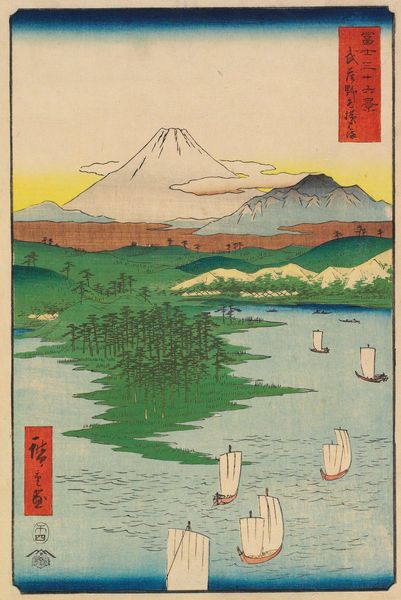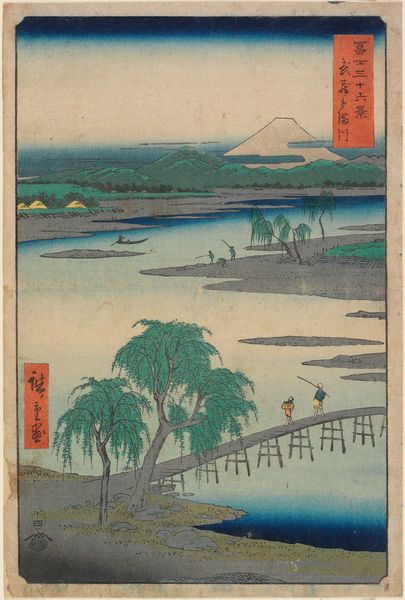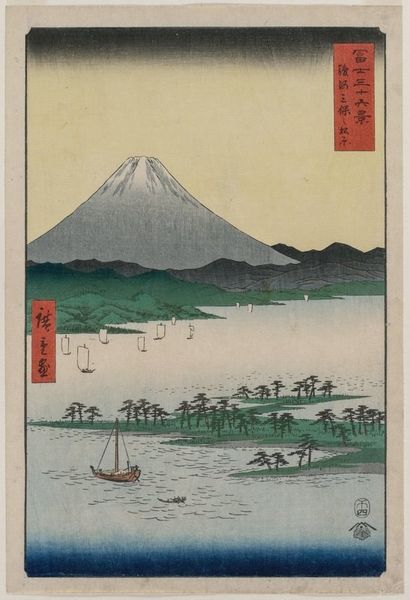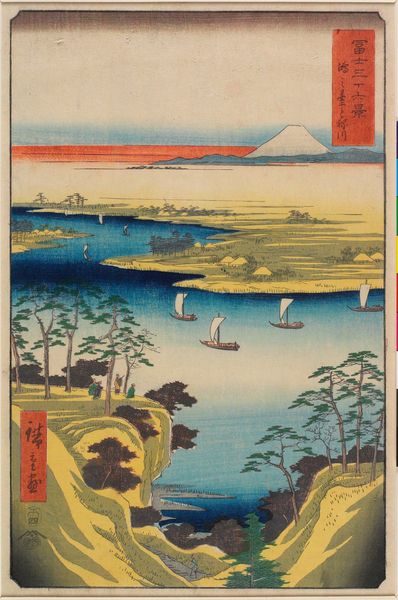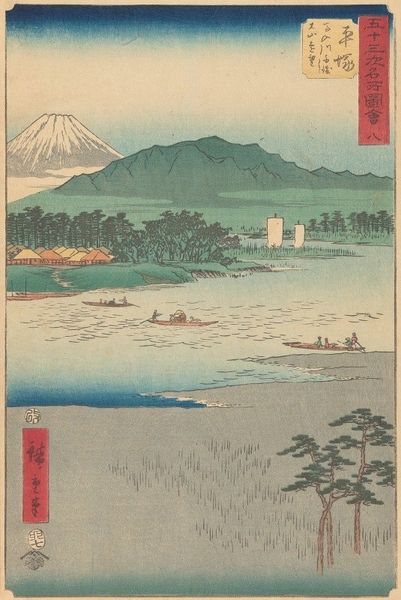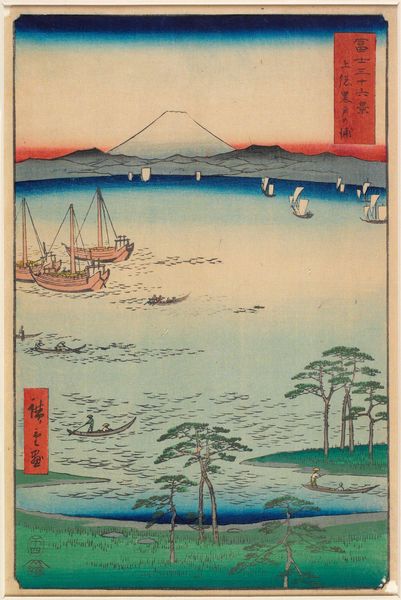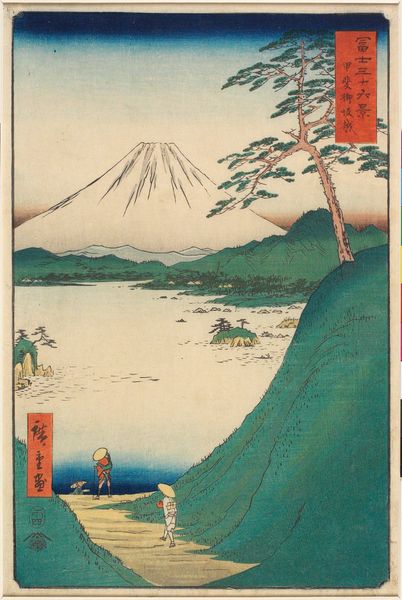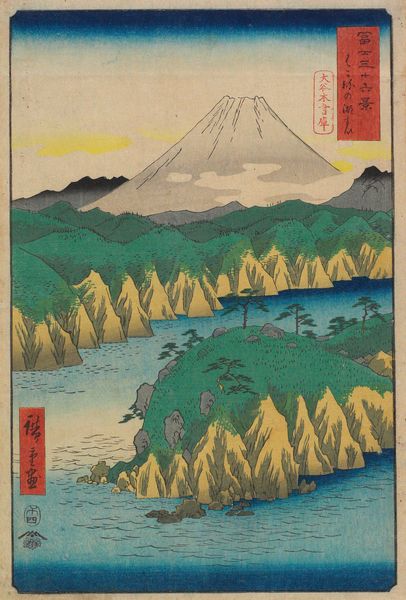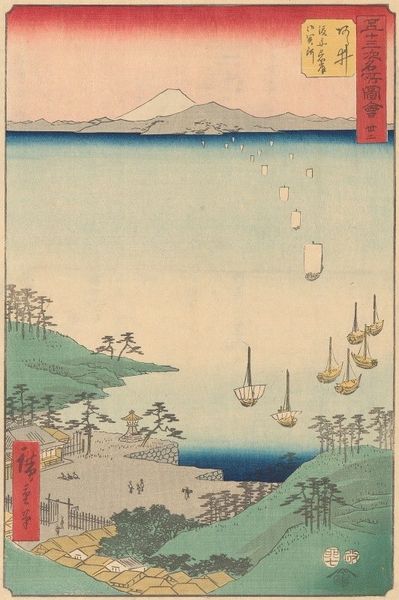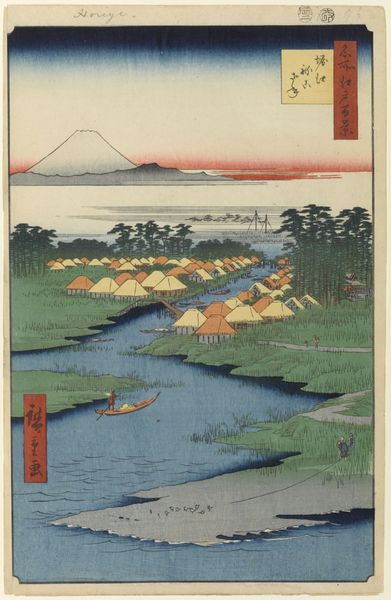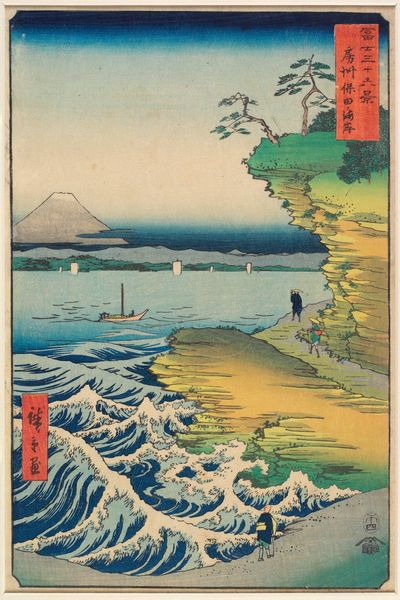
print, ink, woodblock-print, pencil
#
ink painting
# print
#
landscape
#
ukiyo-e
#
ink
#
coloured pencil
#
woodblock-print
#
pencil
#
watercolor
Dimensions: 13 5/16 × 8 11/16 in. (33.8 × 22.1 cm) (image, vertical ōban)
Copyright: Public Domain
Curator: Looking at "The Sea at Miura in Sagami Province," possibly from 1858 by Utagawa Hiroshige, I'm immediately drawn to the layers. It's so calming, almost meditative in its simplicity. Editor: Meditative is right. There's something about that soft gradation in the sky, that quiet water... but if we dig into Hiroshige's process, the woodblock print reveals a huge amount of labour and collaborative craftsmanship. Someone carved these blocks, applied pigment meticulously…it's quite involved. Curator: Yes! The print medium belies the skill, almost obscures it! But the scene itself evokes this sense of quiet grandeur, doesn't it? The iconic Mount Fuji in the background, shrouded in mist. The way the boats glide so gently through the water. There is great visual serenity. Editor: Well, considering that the landscape and Ukiyo-e style became extremely popular because the woodblock prints could be mass-produced and distributed across Japan, its initial commercial appeal stands in stark contrast to our perceived "serenity," which makes the art so complex. How much of the intended feeling translates over a gap of several centuries? How does labor manifest when nature itself is the subject? Curator: That's a compelling point. Thinking about its context gives pause—the print wasn't necessarily about this sublime nature experience as much as commerce and cultural distribution. Editor: Absolutely. The materials - the wood, inks, the very paper - were traded and processed. Each step embedded in social structures of labor. Consider how that challenges any straightforward notion of individual artistic genius! Curator: All that production just to freeze such a beautiful and ephemeral moment in time! Looking at the final composition, though, I see how art can be both deeply connected to process, materials, commerce, and social issues and capable of stirring something universal and still quiet within. Editor: Right, and the enduring popularity also reveals the inherent beauty and craft alongside commerce—these modes of production supported something very worthwhile, which might not otherwise have been produced or valued in that period. A useful lens for considering cultural work today as well.
Comments
No comments
Be the first to comment and join the conversation on the ultimate creative platform.
